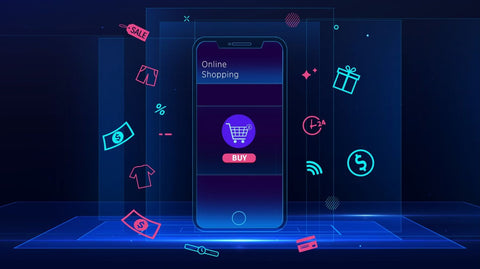CDP vs DMP
Customer Data Platform (CDP) and Data Management Platform (DMP) are both used to collect and manage data for marketing purposes. However, these two platforms are not interchangeable, and each has its own unique characteristics and functionalities.
It is important to understand the differences between the two platforms - CDP vs DMP, including their definitions, functions, and capabilities.
In this article, we'll delve into all the key details, to help you determine which platform is best suited to meet your business and organization needs.
WHAT IS A CDP | WHAT IS A DMP | DIFFERENCES BETWEEN CDP AND DMP | BENEFITS OF CDP | BENEFITS OF DMP

WHAT IS A CDP?
A Customer Data Platform (CDP) is a marketing software designed to manage customer data from various sources, both offline and online, including CRM systems, website visits and interactions, mobile apps, social media platforms, as well as in-store purchases and receipts, and customer service interactions, and consolidate it into a single, unified customer profile. The profile includes all customer interactions, behaviors, interests, preferences, and demographics, among others.
CDPs are designed to enable marketers to gain a 360-degree view of their customers and use the insights derived from the data to create personalized, relevant, and timely messaging and marketing campaigns. A CDP enables marketers to segment their audience, create targeted messages, and deliver personalized experiences across multiple channels and devices.
A CDP is built to meet the specific needs of marketing teams and offers a range of functionalities, including data ingestion, data cleansing, identity resolution, addressability, segmentation, and modeling and analytics. CDPs are also designed to integrate with other marketing tools, such as email marketing platforms, advertising platforms, social media platforms, and customer engagement tools, among others.
CDPs also have strong data governance capabilities, allowing marketers to ensure compliance with data privacy regulations. CDPs are designed to collect, store, and use customer data in a way that is transparent and compliant with data privacy regulations.

WHAT IS A DMP?
A Data Management Platform (DMP), on the other hand, is a technology and data platform used to collect, organize, and analyze large volumes of anonymous user data from various sources, such as third-party data providers, websites, and mobile apps. DMPs enable marketers to create audience segments based on the data collected and use these segments to target users with relevant advertising.
DMPs do not capture personally identifiable information (PII) and focus on collecting and analyzing anonymous user data, such as browsing history, search queries, and social media activity, among others. DMPs are typically used by advertising agencies, publishers, and ad networks to optimize advertising campaigns and increase their return on investment (ROI). By targeting specific groups of customers, businesses can ensure that their ads are seen by people who are more likely to be interested in their products or services.
DMPs use cookies and other tracking technologies to collect user data and create audience segments. The segments are typically based on users' behaviors and interests, such as sports enthusiasts, frequent travelers, or parents, among others. The segments are then used to target users with relevant ads across multiple devices and channels.
DIFFERENCES BETWEEN CDP AND DMP
Now that we have defined what a CDP vs DMP is, let's explore the key differences between these two marketing platforms.
DATA TYPES
One of the main differences between CDP and DMP is the type of data they capture and analyze. CDPs can collect first-second-third party data including collecting and consolidating personally identifiable information (PII), such as names, email addresses, phone numbers, and purchase history, among others. CDPs aim to create a unified customer profile that includes all relevant data points to help businesses understand their customers better.
DMPs, on the other hand, focus on collecting anonymous user data, such as browsing history, search queries, and social media activity, among others. DMPs by nature of their definition and functionality cannot collect first-party data and cannot store personally identifiable information (PII). DMPs aim to create audience segments based on users' behaviors and interests, which can be used to target users with relevant ads.
DATA SOURCES
Another significant difference between CDP and DMP is the sources of data they capture. CDPs can capture data from various sources, such as CRM, website, mobile apps, and social media, among others. CDPs aim to consolidate data from multiple sources into a single customer profile to provide a comprehensive view of the customer.
DMPs are a slightly older technology than CDPs, and they are primarily designed for data-driven advertising. DMPs collect data from various sources, such as third-party data providers, websites, and mobile apps, and combine it with first-party data to create detailed customer profiles. These profiles can be used by marketers to create targeted advertising campaigns.
FOCUS
CDP is primarily focused on customer data management, while a DMP is primarily focused on advertising. CDPs provide a comprehensive view of the customer, allowing marketers to create personalized marketing campaigns, while DMPs provide detailed customer profiles that can be used to create targeted advertising campaigns.
Another way to look at the key difference between the two platforms - CDP vs DMP is that CDP is built with and for the specific datasets of a business, whether it be first-second-third party. Hence it is specific to the business and provides tremendous advantage for businesses that invest in a CDP. On the other hand, DMP is built with anonymous data and will be inherently third party data for the businesses and marketers using it, hence the DMP datasets are also available to other businesses and marketers. That's the inherent nature of a DMP.
DATA MANAGEMENT
Businesses can implement a CDP for a unified view of the customer, allowing marketers and business development to create a comprehensive customer profile. CDPs also have strong data governance capabilities, ensuring compliance with data privacy regulations.
DMPs, on the other hand, use data analytics and machine learning algorithms to segment customer data based on behavior, interests, and demographics. DMPs focus on data analysis and optimization, allowing marketers to create specific and focused advertising campaigns.
USE CASES
CDPs are primarily used for customer engagement, such as email marketing, personalization, and customer retention. It is a more holistic approach towards customer relationship and retention and growth.
DMPs are primarily used for digital advertising, such as display advertising, social media advertising, and programmatic advertising.
Accordingly, while there is some overlap between the two platforms, they are designed to address different marketing needs.
USER-FRIENDLINESS
CDPs are designed to be user-friendly and accessible, even for non-technical users. CDPs provide marketers with a visual interface that allows them to create customer segments and personalize marketing campaigns easily. They also seamlessly integrate with multitude of online and offline channels to maximize and enhance customer engagement and value-add to customers.
DMPs, on the other hand, are more technical and require some level of expertise in data analysis and advertising. Since the focus is more on advertising and ROI, a variety of tools are involved that facilitate modeling and analytics to help maximize returns.
BENEFITS OF CDP
COMPREHENSIVE VIEW OF THE CUSTOMER
One of the biggest benefits of a CDP is that it provides a comprehensive view of the customer, allowing businesses to create personalized messaging and marketing campaigns based on customer behavior, preferences, and interests. CDPs aggregate customer data from multiple sources and combine it into a single profile, providing marketers with a holistic view of the customer.
Since CDP is built with the specific datasets of a business, and CDPs can include first party, second party, and third party data, it can be very comprehensive, and at the same time allow for specific segmentation and targeting. CDPs are specific to the business that deploy them, and hence offer tremendous advantage for businesses that invest in a Customer Data Platform.
BIRDS EYE BLUE - BIG DATA CDP (CUSTOMER DATA PLATFORM)
PERSONALIZATION
CDPs allow businesses to create highly personalized marketing campaigns, resulting in increased customer engagement and retention. Using CDP data, modeling and analytics, marketers are able to segment their audience based on customer behavior, preferences, and interests, and create personalized campaigns for each segment.
DATA GOVERNANCE
CDPs have strong data governance capabilities, ensuring compliance with data privacy regulations. CDPs enable businesses to collect, store, and use customer data in a way that is transparent and compliant with data privacy regulations, protecting the customer's privacy and building trust with the customer.
BENEFITS OF DMP
TARGETED ADVERTISING
DMPs allow marketers to create highly targeted advertising campaigns. Based on anonymous data, marketers segment the data and expand it further using modeling techniques to identify prospective and potential customers. Furthermore data housed in the DMP can be refined using analytical tools to create more specific advertising.
DMPs use data analytics and machine learning algorithms to segment customer data based on behavior, interests, and demographics, allowing marketers to create targeted advertising campaigns that are highly effective.
REAL-TIME BIDDING
DMPs provide real-time bidding capabilities, allowing marketers to bid on advertising inventory in real-time. This means that marketers can create highly targeted advertising campaigns that reach the right customers at the right time, resulting in increased ROI and conversion rates.
LOOKALIKE AUDIENCES
DMPs allow marketers to create lookalike audiences, which are groups of customers who share similar characteristics to an existing customer base. DMPs use machine learning algorithms to identify these characteristics and create a lookalike audience that can be targeted with advertising campaigns.

CDP vs DMP - SUMMARY
Both CDPs and DMPs are two powerful tools for managing customer data in the digital marketing world. Although they have some similarities, such as the ability to collect and analyze customer data, they are designed to address different marketing needs. CDPs are primarily focused on customer engagement and personalization, while DMPs are focused on digital advertising and targeting. Businesses and Marketers should carefully evaluate their marketing needs and choose the platform that best suits their goals and objectives.
Author:
Reshma Rodricks
Founder and CEO, Birds Eye Blue, Inc.
